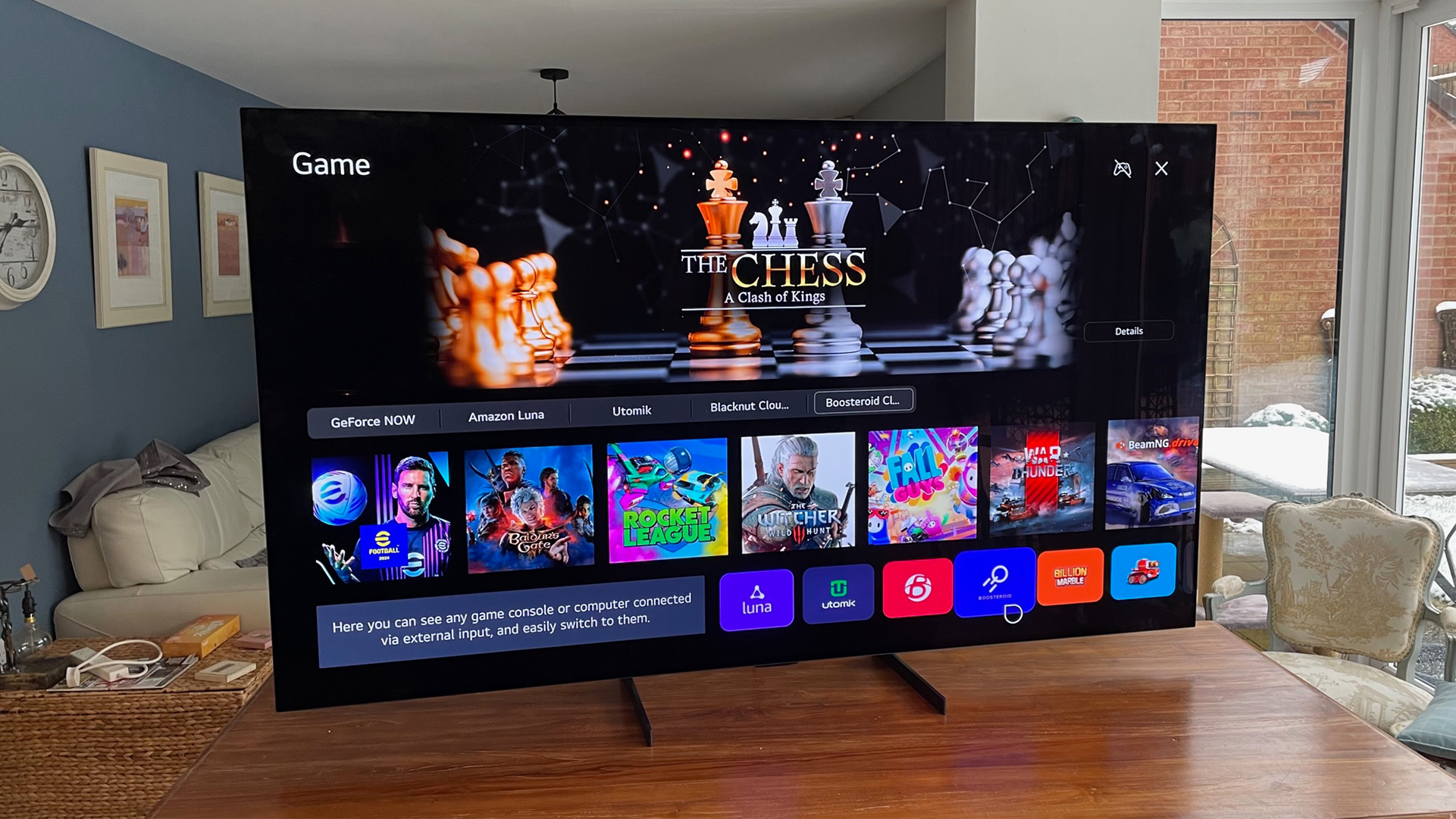What Hi-Fi? Verdict
Beautiful though the LG Z3’s 8K pictures undoubtedly are, its extra pixels come at a hefty cash and brightness cost.
Pros
- +
Gorgeous, incredibly detailed picture
- +
Strong upscaling performance
- +
Luxurious design
Cons
- -
It’s painfully expensive
- -
It’s not as bright as expected
- -
Slightly inhibited audio performance
Why you can trust What Hi-Fi?
While the unfettered imagination of LG’s OLED design department means there are more expensive LG TVs out there, for all but the truly super-rich the 77-inch Z3 represents the realistic pinnacle of the South Korean brand’s current TV range.
Why? Because it uniquely (apart from an 88-inch sibling) combines LG’s latest excellent Brightness Booster Max OLED technology with an 8K resolution that actually delivers four times as many pixels as a 4K TV. Needless to say, the performance potential of this all-singing, all-dancing tech partnership is mouthwatering – but in a world where even 4K content is far from omnipresent, is the 8K resolution really worth it?
Price
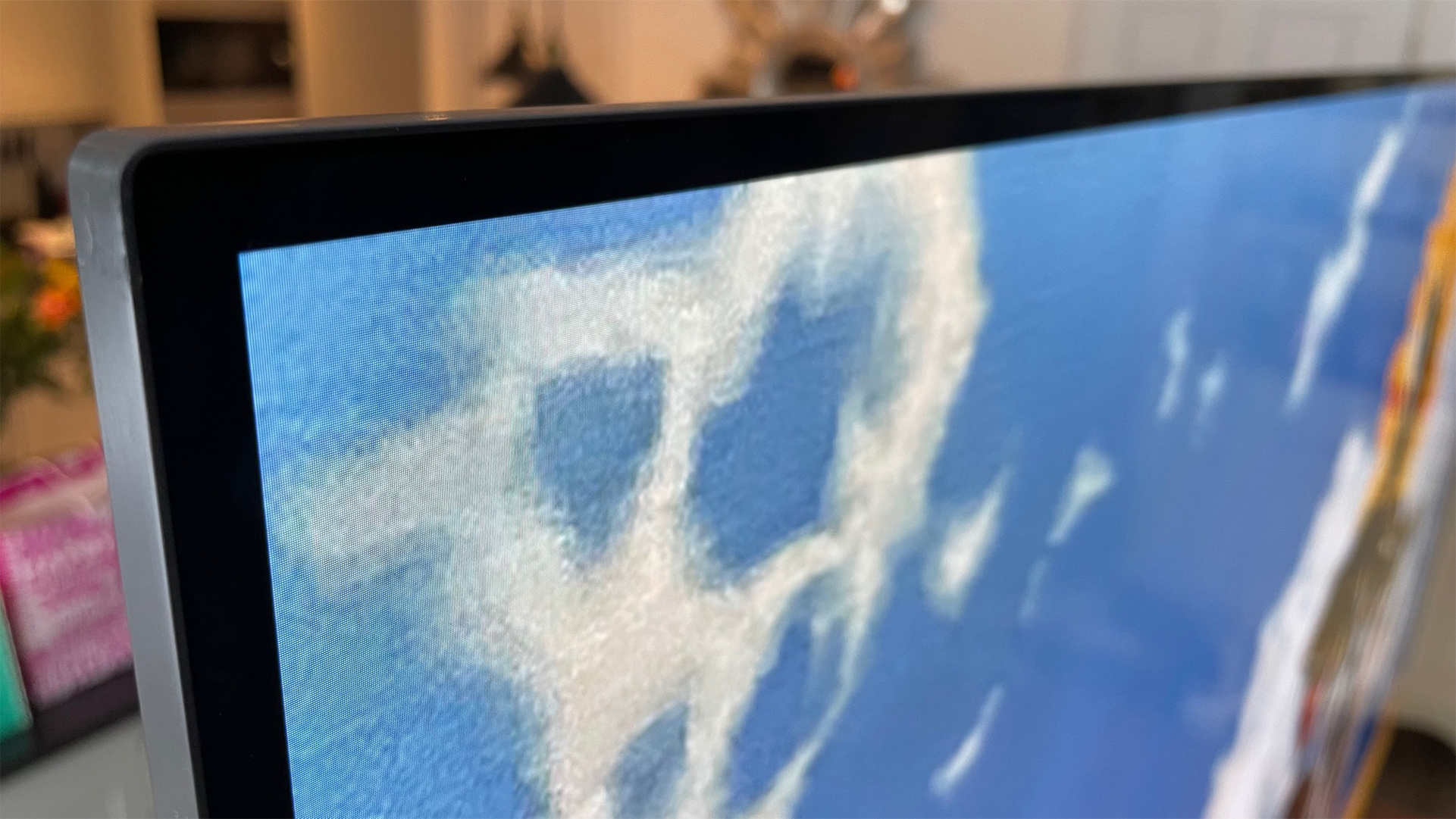
While we said earlier that you don’t need to be truly super-rich to afford the OLED77Z3, it certainly helps. For while this set might not run into the many tens of thousands of pounds or dollars needed to bag an LG Signature R rollable OLED TV or the upcoming see-through OLED T series unveiled at this year’s CES, it still costs £14,999 in the UK and $15,999 in Australia. The set is unexpectedly not available in the US (a decision by LG that doesn’t exactly bode well for the future of 8K TVs, it has to be said).
The UK and Australian prices look even higher in 2024 than they might in previous years thanks to some serious price erosion elsewhere in the king-sized TV market. You can now get respectably performing 75-inch 4K LCD TVs for under a grand in the UK, and Samsung’s flagship 8K 75-inch TV currently costs about a third of the 77-inch LG Z3.
Perhaps most pertinently of all, the 77-inch model from LG’s own G3 OLED range, which uses the same premium Brightness Booster Max technology that the OLED77Z3 does, currently only costs £3699 / AU$6995. This means, basically, that you’re paying more than £11,000 / AU$8000 to combine Brightness Booster Max with an 8K rather than 4K resolution.
Design
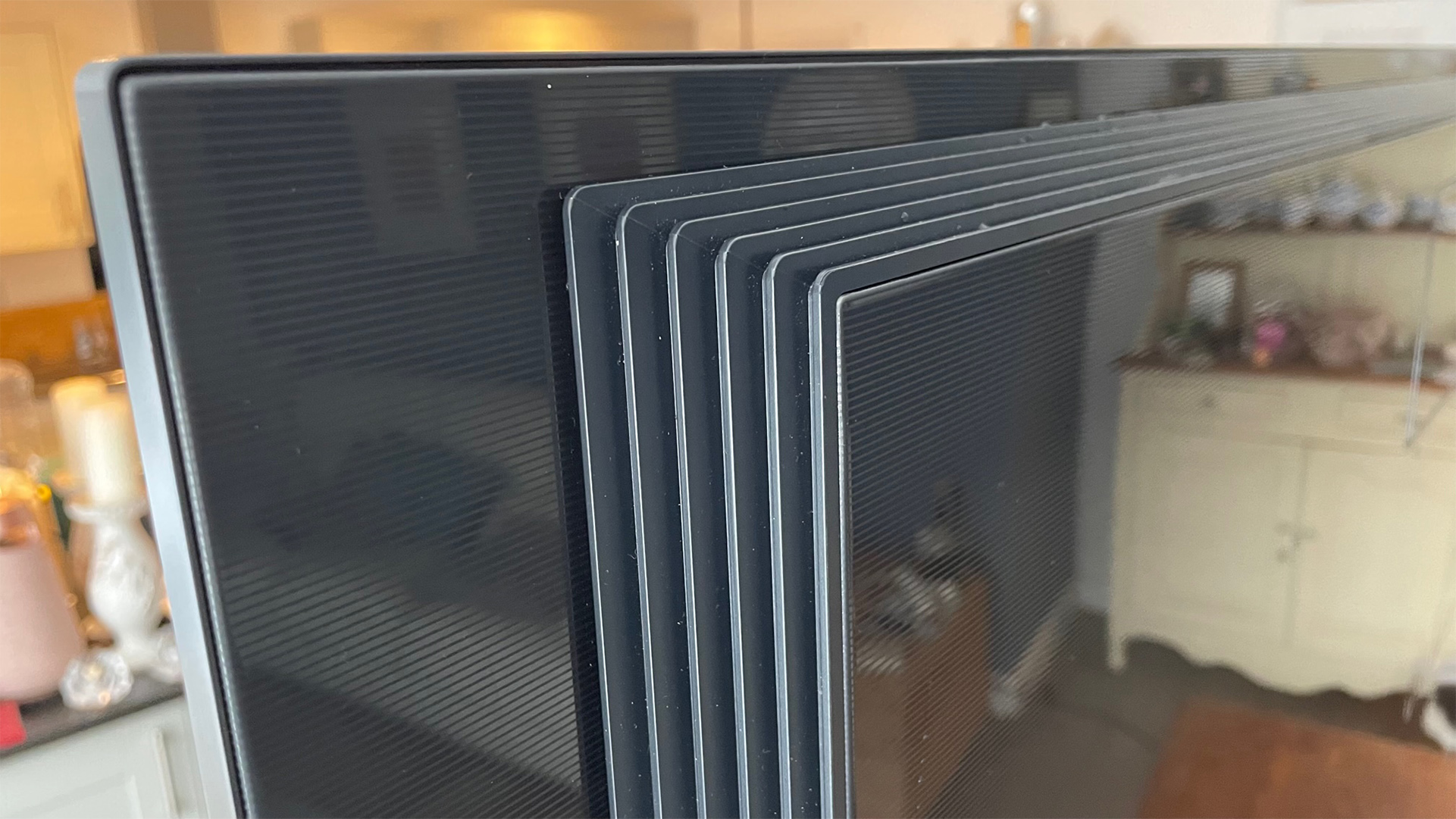
We’re a bit torn over the LG OLED77Z3’s design. In some ways it’s lovely; the frame around the screen is beautifully minimal, and the ‘multi-layered’ effect of the rear panel has an almost architectural, Sydney Opera House-like appeal. The whole thing is phenomenally well built too, and a nice recessed wall mounting point allows you to hang the screen flush to your wall.
We’re not the biggest fans of the reflective ‘mirror finish’ of its rear panel, though, and despite the recessed wall mount the screen’s rear is surprisingly deep by OLED standards, meaning the screen still sticks out quite some distance from your wall. Also, while it’s nice to find the TV shipping with feet rather than them being a hard-to-find optional extra, those feet look a bit low-rent for such a premium screen.
The latest hi-fi, home cinema and tech news, reviews, buying advice and deals, direct to your inbox.
We’d also stress that building the TV, whether you wall hang it or put it on its feet, is not a job for the faint-hearted or weak-backed. You’ll want to handle your £15K investment with the utmost care, yet that’s hard to do when something is as big and weighs as much as the OLED77Z3.
Features
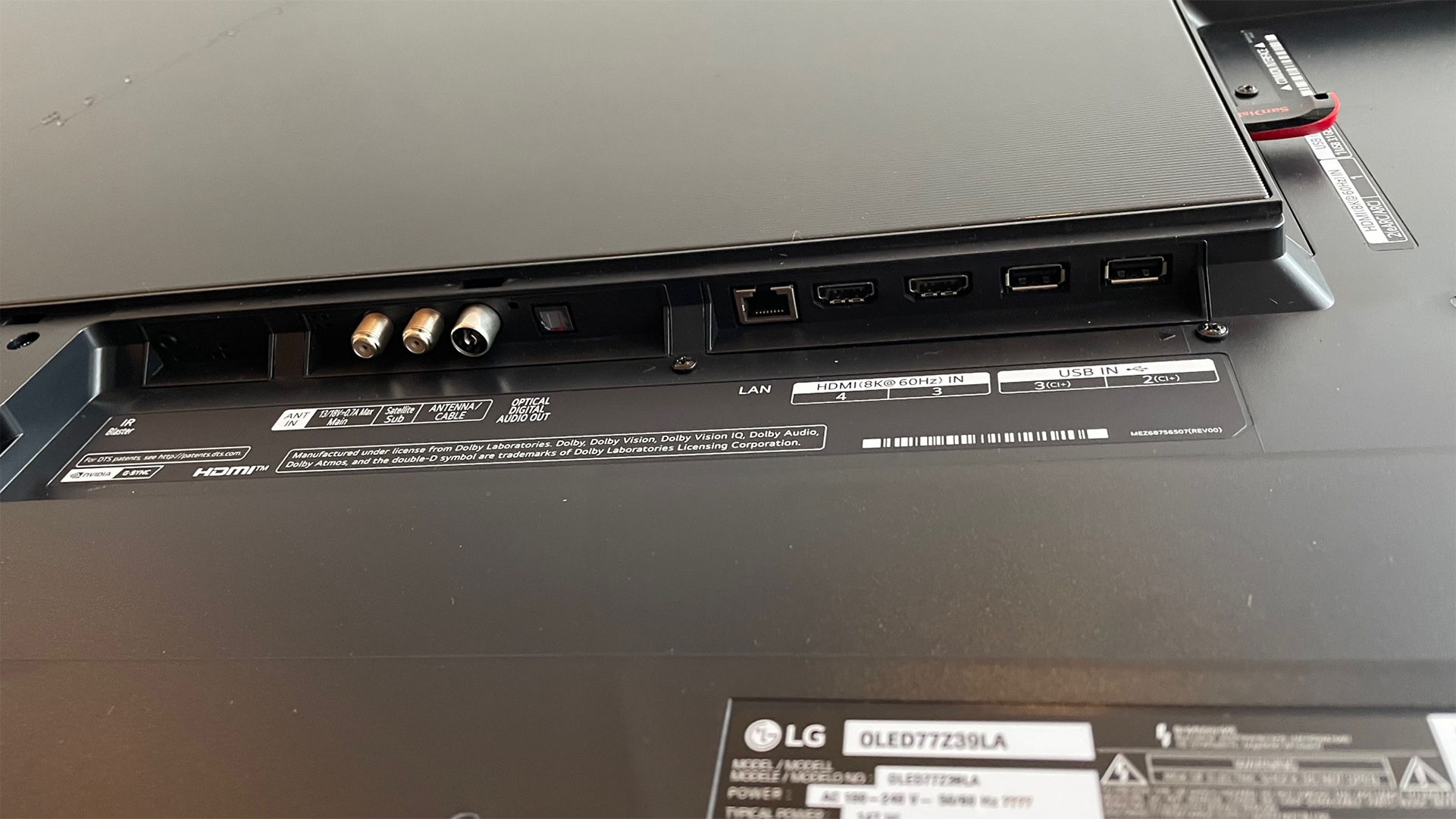
We’ve said it before, but it needs to be said again: the LG OLED77Z3 takes the proven brilliance of LG’s new Brightness Booster Max technology and combines it with an 8K resolution.
Delving into this headline combination more deeply, it means we will hopefully see ground-breakingly high (by OLED standards) brightness courtesy of LG’s new 8K-optimised Alpha 9 Gen 6 video processor and Micro Lens Array technology, which places tiny lenses behind the screen to help focus and therefore amplify the light produced by the OLED pixels.
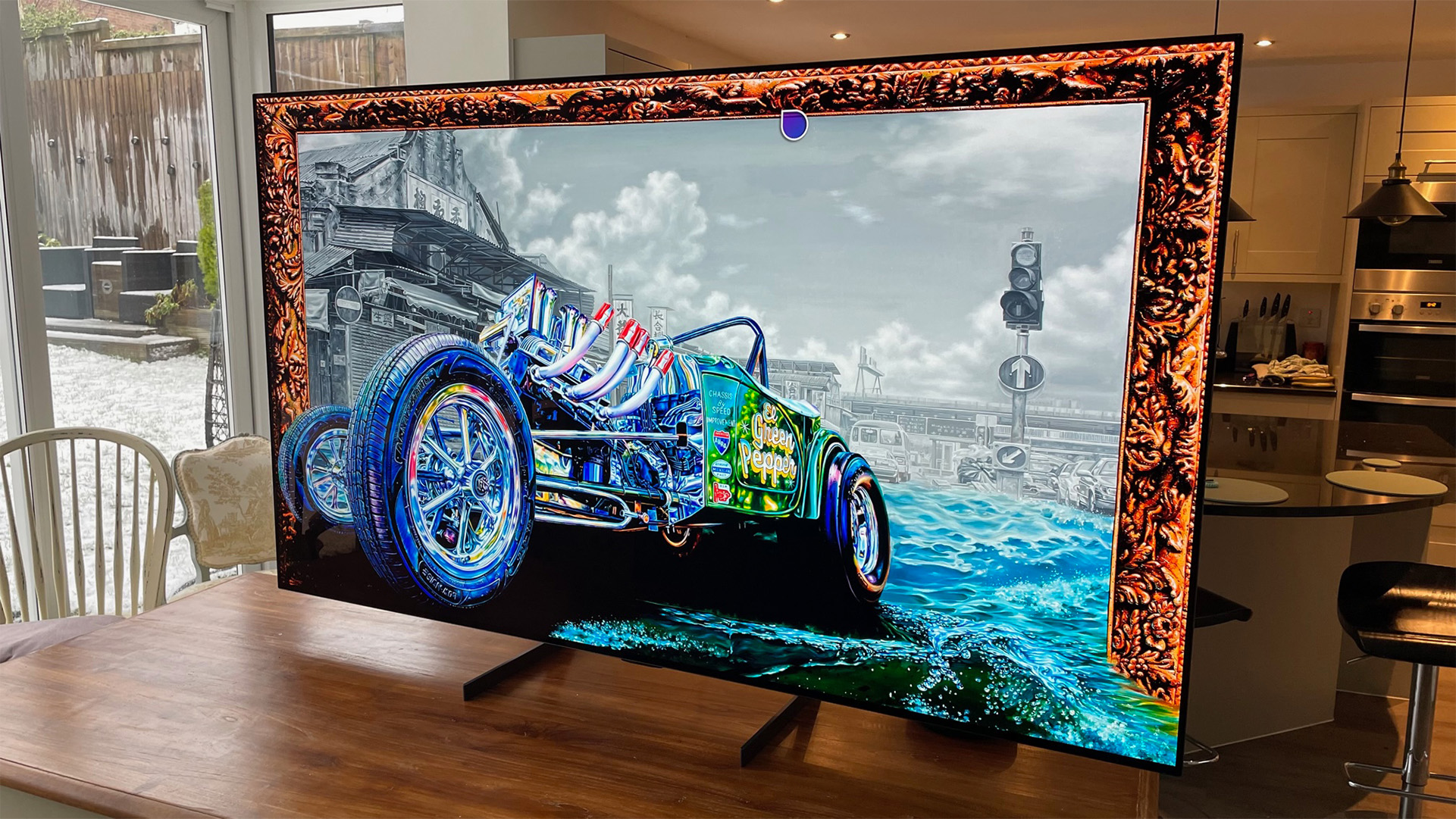
Screen size 77 inches (also available in 88 inches)
Type OLED (with MLA)
Resolution 8K
HDR formats HLG, HDR10, Dolby Vision
Operating system WebOS 23
HDMI inputs x4 (all HDMI 2.1)
Gaming features ALLM, VRR, 4K/120Hz, Dolby Vision game mode (up to 4K/120Hz)
ARC/eARC eARC
Optical output? Yes
Dimensions (hwd, without stand) 98 x 172 x 3.3cm
The 8K resolution gives you a massive 7680x4320 pixels, versus the 3840x2160 you get with 4K TVs. Enough, 8K advocates say, to essentially transform the image from a picture on a TV to something that looks like real life.
There are lots of 8K detractors too, of course. Their views are largely based on the ongoing shortage of native 8K content together with the idea that you can’t see the difference between 4K and 8K pictures unless you stick your nose right up against the screen. Our experience, though, doesn’t (fully) back these negative views up, as we’ll explore in the picture performance section.
As well as allegedly improving the way the OLED77Z3 upconverts 4K (and below) sources to the screen’s 8K resolution, LG’s new Alpha 9 Gen 6 processor applies heavy-duty AI machine learning to all sorts of picture elements if you select its AI Picture Pro option, while a new AI Sound Pro option is provided that’s capable of upconverting pretty much any sound source, even just a basic stereo mix, into a 9.1.2-channel presentation.
This doesn’t mean the TV carries a true 9.1.2-channel speaker count, mind you; it actually has a 60W 4.2 speaker set-up. The TV uses psycho-acoustic processing to create a virtual 9.1.2 channel soundscape.
While the AI Sound Pro option is available with any content, unfortunately (and rather pedantically, we’d say) concerns over respecting copy-protected material on, say, 4K and HD Blu-rays means the AI Picture Pro setting is predominantly only available with broadcast material.
As ever with LG OLED TVs, the OLED77Z3 supports the HDR10, HLG and Dolby Vision high dynamic range formats – with the Dolby Vision support extending to 4K/120Hz game sources, complete with a low latency Dolby Vision gaming preset.
LG doesn’t add the premium HDR10+ format to its HDR support list. There isn’t nearly as much content out there in HDR10+ as there is in its Dolby Vision rival, but it would still be nice if a TV as expensive and cutting edge as the OLED77Z3 was equipped to take in the very best potential presentation of any source with which it’s presented. Even though experience suggests that LG’s own excellent HDR dynamic tone mapping will do a good job of optimising the basic HDR10 signal it ‘sees’ instead of HDR10+ to the capabilities of its screen.
As you would expect of LG’s flagship TV, its gaming talents go beyond the 4K/120Hz and Dolby Vision Game mode we’ve already discussed. There’s also support for VRR up to 120Hz in both the Nvidia G-Sync and AMD Freesync VRR systems as well as its ‘standard’ guise. All four HDMI ports support all of these gaming features too, rather than just a couple, and there’s a feature-packed Game Dashboard you can call up when gaming that can monitor your graphics stats and give you quick access to a few gaming aids (AKA mild cheats…).
The screen takes just 13.5ms to render 1080p/60Hz sources, too, despite the huge amount of real-time brain power required to convert such lowly resolution graphics to the screen’s 8K resolution.
The OLED77Z3’s smart features are provided, inevitably, by LG’s own webOS platform. This features a few handy navigation and content showcase enhancements over its previous iteration, as well as introducing support for multiple user profiles so that different members of your household can set up their own home screens and have the TV use personal viewing habit data for each profile to produce more individually focused content recommendations.
Picture

Let’s address the elephant in the room right away and say that on the LG OLED77Z3, 8K resolution does have a positive impact on picture quality. And crucially this isn’t limited to just native 8K content.
It was native 8K content we used to open the OLED77Z3’s account, though, as it seemed only fair to see what such an expensive beast was capable of on its ‘home turf’, as it were. If you’re wondering where this mythical 8K content came from, given the stubborn shortage of it in the ‘real world’, it was a showreel of native 8K HDR visuals compiled by US AV gurus Spears & Munsil chiefly comprising a mix of animal close-ups and gorgeous American vistas.
Every last frame of this native 8K extravaganza looks sensational. Sensational to a degree that goes beyond the best images we’ve seen on a 4K TV (and we actually have exactly the same footage in 4K for direct comparison).
You don’t have to put your face right up to the OLED77Z3’s screen to appreciate the 8K difference, either; it’s there from regular viewing distances in the enhanced sense of depth that shots enjoy, the immaculate, jagged-free finish to curved and angled edges, the genuinely enhanced details and textures of stuff such as butterfly wing close-ups and, most overwhelmingly of all, the overall extra feel of realism and immediacy you get from seeing a picture which, even at 77 inches, just doesn’t seem to be created from pixels at all. It feels instead like you’re looking through a window at a world of wonder on the other side.
With readily available native 8K content so long-term absent, though, it’s great to find the OLED77Z3 also doing a truly expert job of upscaling 4K content to 8K. The way all the necessary extra pixels are added on the fly delivers results that look better than native 4K; more dense, more richly textured and, ultimately, more lifelike – and without any of the softness, lag, unwanted processing artefacts or colour muting that heavy-duty upscaling engines can sometimes cause.
This crucial ability to make 4K content look better than it does on good quality 4K TVs applies to gaming too, giving us both enhanced depth and raw beauty to vistas in games such as Microsoft Flight Simulator, and more gorgeous density to character details and costumes.
Things get less consistently spectacular when you step down to the HD content many of us still have to watch for much of the time. If your source is pretty pure – a good Blu-ray, say – the upscaling still works well, delivering surprisingly clean, natural images despite the colossal amount of pixels the TV is having to create for every image frame in real-time. Grubbier HD sources such as YouTube streams or compressed digital broadcasts provide more of a challenge and certainly don’t look as ‘4K-like’ as cleaner HD sources can.
While they are a bit softer and so don’t show off your screen’s key feature as well, though, the ability of the OLED77Z3’s processor to smooth away noise without smoothing away too much detail still leaves all but the most truly grotty-looking HD sources still perfectly watchable.
Standard definition sources are a step too far even for the OLED77Z3’s lofty processing. They don’t look actually horrible, but they’re certainly softer and more processed-looking than they are on most half-decent 4K TVs, simply because the amount of pixels that need to be conjured up is getting almost silly at this point. We’d like to think, though, that anyone spending £15K on a TV will also have invested in as many high-quality sources for their new TV beast as possible.
While the OLED77Z3 proves 8K a worthwhile technology for die-hard AV fans, it’s important to say that it only makes the 8K case so well because it also excels in other picture areas. We’ve seen on lesser 8K TVs that 8K alone does not a great TV make.
So it helps immensely, for instance, that every single pixel in the OLED77Z3’s screen makes its own light and colour, independently of its neighbours. This allows it to paint light and colour at exactly the same ultra-tiny scale as its pixel resolution – a degree of accuracy not even the richest local dimming systems on 8K LCD TVs can compete with. This makes the extra resolution feel stunningly organic and the whole finish of the picture even more life-like and immaculate.
The pixel-level lighting control delivers all the familiar gorgeous deep black levels and impactful local contrast strengths we expect to see with OLED TVs too, only at an even smaller and subtler scale. The beauty of this level of light control and attendant colour toning and shading is otherworldly at times.
The OLED77Z3 provides no support whatsoever for the notion that ‘WRGB’ technology of the sort LG uses in all of its OLED TVs might leave bright colours looking washed out or flat because of its use of a white sub-pixel. The OLED77Z3’s pictures drip with vivid, bold saturations – without a hint of banding or ‘cartoonishness’. Plus, as always with LG OLED TVs, there’s an excellent array of picture presets available that let you choose between either quite bold images that really push the screen’s capabilities or remarkably accurate (to industry standards and professional mastering methodologies) images.
There are, though, a couple of picture niggles beyond the SD upscaling limitations – one predictable, one a surprise. The predictable one is that motion handling with 24p sources can look a bit more juddery with no motion processing involved thanks to the way that judder jars more against the exceptional purity of 8K images. Even LG’s usually reliable Clear Motion option doesn’t calm judder down quite as ‘invisibly’ as it tends to on the brand’s 4K OLED TVs.
The surprising limitation is that the OLED77Z3 is palpably less bright than LG’s G3 4K OLED TVs, despite both sets using the MLA-plus-processing Brightness Booster Max technology. It’s slightly brighter than its Z2 predecessor, to be fair, but the ‘giant brightness leap for OLED kind’ witnessed with the G3s just isn’t there to nearly the same extent.
We can’t say for sure why this is the case; maybe it’s a result of needing to hit stringent new TV energy consumption regulations, or maybe it’s something to do with the sheer amount of panel architecture required to get so many pixels – and sub-pixels – into an OLED screen.
Whatever the reason, though, while it doesn’t stop the OLED77Z3’s pictures from being consistently stunning, it does bring an unexpected twist into the equation of whether to pick this set or the significantly brighter 4K OLED77G3 for around a third of the price.
Sound

While LG’s TV audio processing has consistently shown off some clever tricks over the years, its TV speaker hardware has consistently felt a little off the pace. This trend continues even with a TV as premium as the OLED77Z3.
So in the pros column, the processing that upconverts whatever sound the TV receives to 9.1.2 via the AI Sound Pro feature does a strikingly good job of creating a soundstage that has width, height and even a sense of sound reaching gently down the sides of your seating position. It loses a little low frequency heft in its soundstage widening process, but overall it definitely gets more value out of good movie mixes – including by placing details reasonably accurately around the soundstage and locking dialogue to the screen – than the non-AI sound presets.
Unfortunately, the clever processing isn’t backed up by enough sheer power and volume to do it – or good movie mixes – full justice. It can’t get as loud as the 77-inch Brightness Booster Max pictures deserve, and bass is limited in how low it can go without starting to sound uncomfortable. Also, while some effects reach a surprising distance into the room with AI Sound Pro active, the sound generally feels rather lacking in immersive forward impetus, with much of the action sounding more like it’s coming from behind the screen.
Verdict
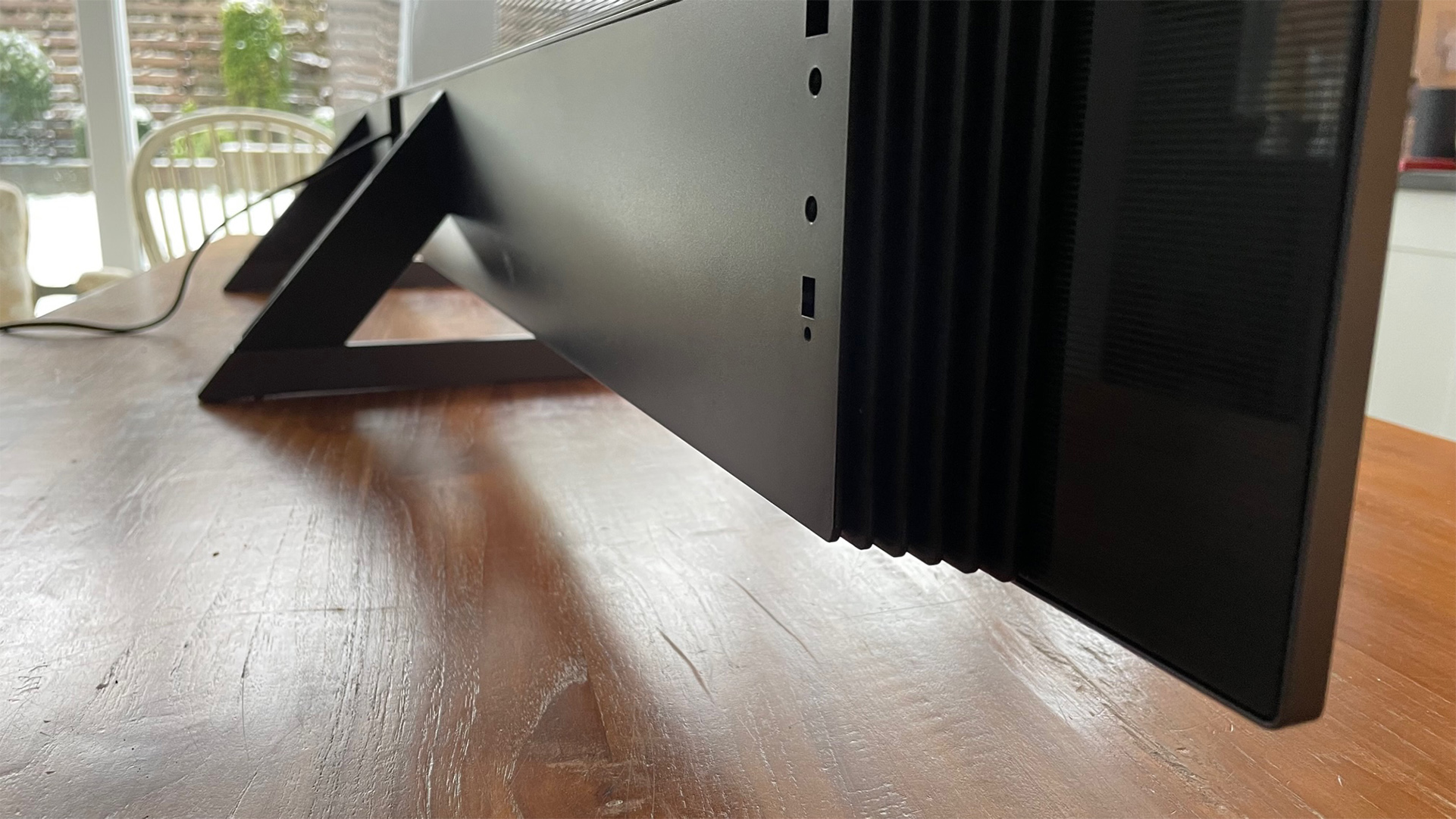
Viewed in isolation, the LG OLED77Z3 is in many ways a thing of beauty. Its 8K resolution both brings out the best of OLED’s self-emissive technology and enhances the appearance of any decent HD and 4K content you throw at it – as well as looking next-level sensational with native 8K sources if you can find any.
It’s peculiar that it gets so much less brightness out of its Brightness Booster Max technology than the vastly cheaper 4K G3 series, though. Which brings us to our main concern: its price. At £14,999 / AU$15,999 it isn’t just a ‘stretch’, it’s simply beyond the reach of the vast majority of even the most dedicated AV fans.
That might typically not be enough in itself, perhaps, to deny a TV as outstanding as the OLED77Z3 a final overall score of 5 stars. Sometimes if you want the best you just have to pay for it. However, given their shared Brightness Booster Max technology, you just can’t keep LG’s OLED77G3 out of the price equation. And when you factor in that this G3 series model is a whole £11,000 / AU$8000 cheaper while actually getting more value out of the Brightness Booster Max tech than its 8K sibling, we’re just not convinced that all of the OLED77Z3’s extra pixels do quite enough to justify such a massive price hike.
SCORES
- Picture 4
- Sound 3
- Features 5
MORE:
Also consider the LG G3
Read our Sony XR-77A95L review
I saw every TV at CES 2024 (probably) and these 5 were the best
What Hi-Fi?, founded in 1976, is the world's leading independent guide to buying and owning hi-fi and home entertainment products. Our comprehensive tests help you buy the very best for your money, with our advice sections giving you step-by-step information on how to get even more from your music and movies. Everything is tested by our dedicated team of in-house reviewers in our custom-built test rooms in London, Reading and Bath. Our coveted five-star rating and Awards are recognised all over the world as the ultimate seal of approval, so you can buy with absolute confidence.
